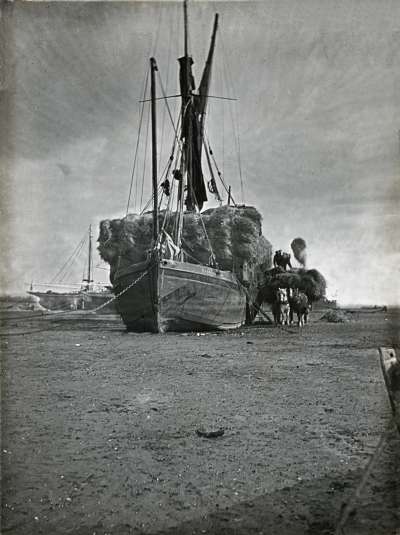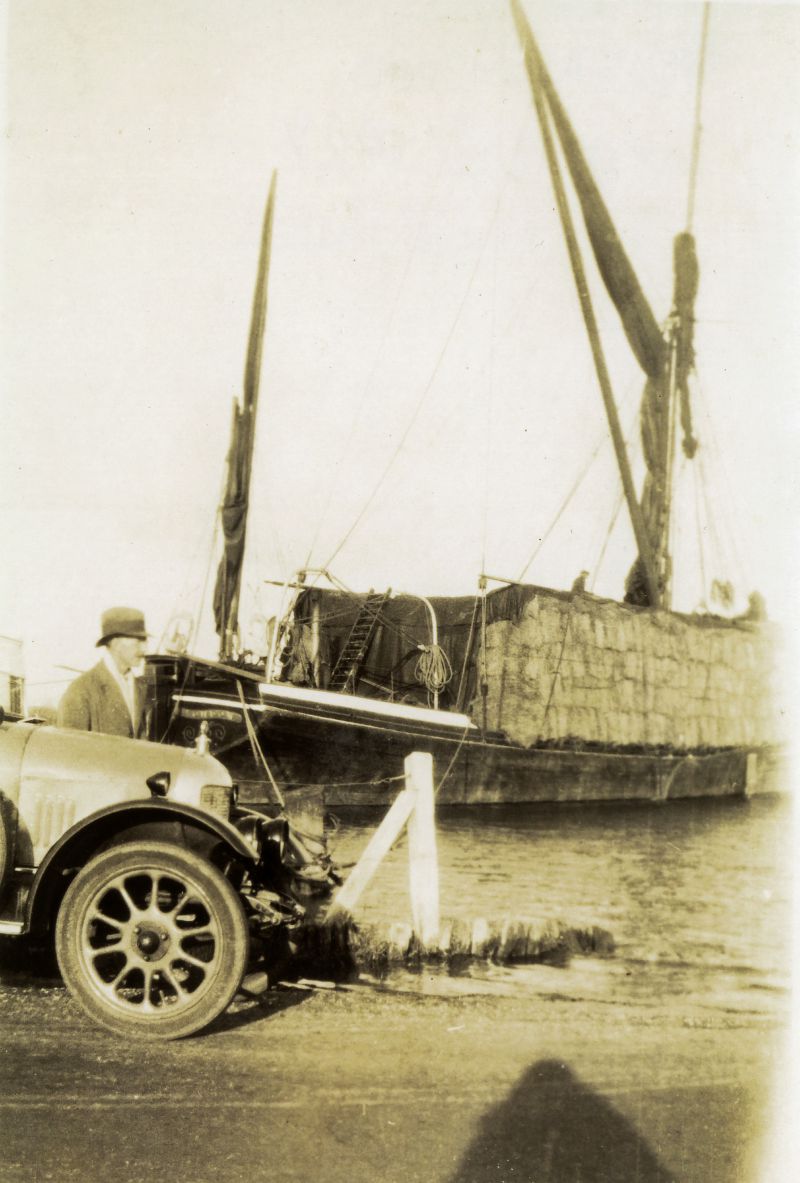| I am prompted to come on to this subject since a West Mersea postcard sold recently for £134.99 on ebay. It was a view is looking across The Strood towards Mersea and showing a hay barge, or Stackie as they were called, in the distance at the barge quay loaded with a huge stack of hay. Up to around one hundred years ago most of the London traffic was horse drawn and the horses needed vast amounts of fodder and bedding. Much of this came from Essex farms and where these farms were near the coast it was loaded on to sailing barges and taken to London. Hay and straw is a fairly light cargo and a stack would weigh around 40 tons on a barge capable of carrying 120 tons.

The first picture shows the barge RACHEL & JULIA loading hay on West Mersea Hard around 1905. This picture comes courtesy of David Patient and Mersea Island Museum and shows loose hay being loaded. This would have been brought in wagons from Firs Farm, Brick House or Hall Farm down Firs Chase.

The second picture is from my collection and shows the Bradwell owned barge NELLIE PARKER at The Strood loaded with pressed straw which resembles bales. This was compacted in a hay press and makes for a neater stack. I would guess this picture comes from the 1920s or 30s. The car in the foreground I think is a Bullnosed Morris which would help to date this picture.
Hopefully a classic car enthusiast will put me right there. The hard work came if the cargo was to be delivered above bridges in London. The middle of the stack had to be pulled out for the sailing gear to be lowered in order to pass under the bridges and then it was matter of rowing or poling the barge to its destination.
Bringing a barge into the coast had its hazards. In 1939 the VICTA was carrying a load of Kentish rag stone into East Mersea to the beach at the bottom of the lane down from the church. She stranded across the gut and broke her back. Her gear was salvaged and the hull was brought to the Hard. She became a house barge, firstly at Peldon and then for many years alongside the Strood - a familiar sight to Island visitors in the 1950s. Ces Hewes brought up a family on her.
From Mersea Life, November 2018 |